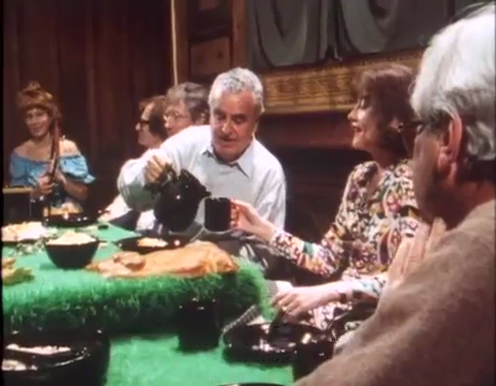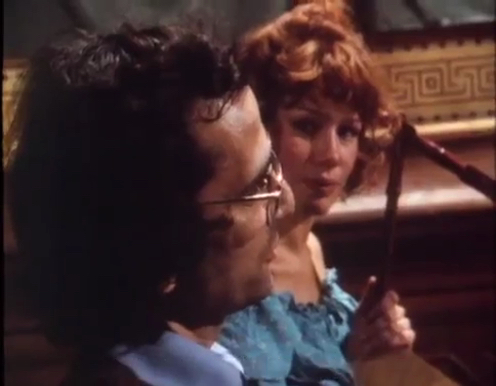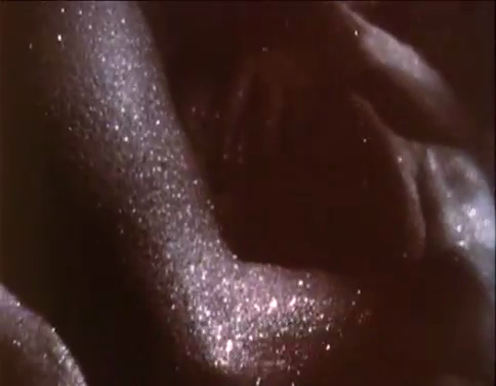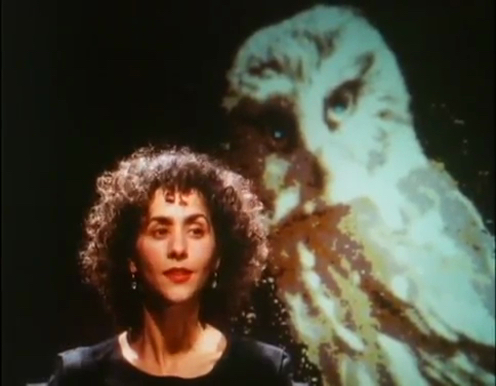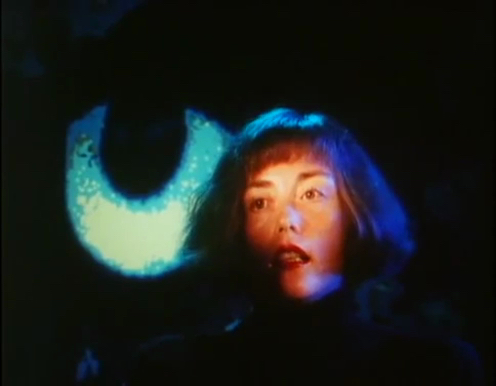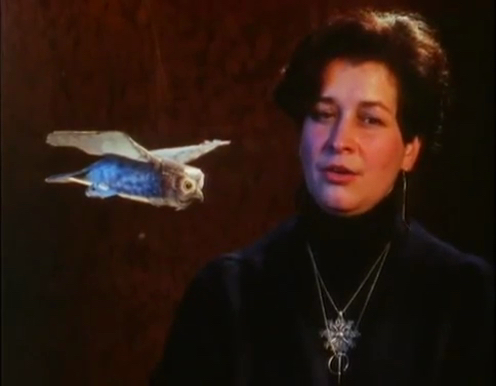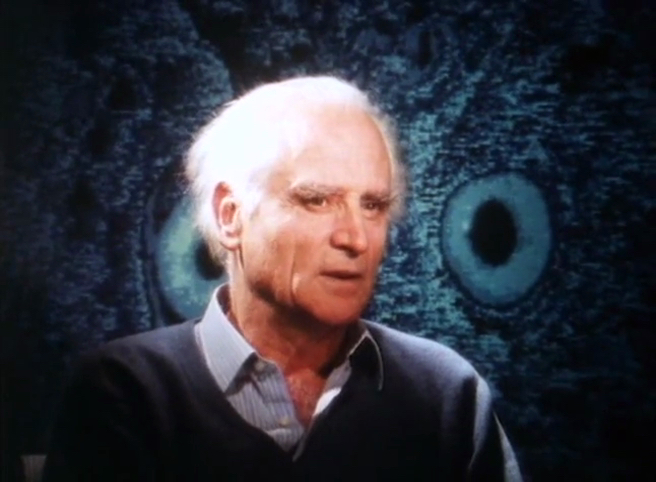The Essayist among and through Others: Chris Marker’s Symposial Montage in The Owl’s Legacy
Rick Warner
It seems certain that Chris Marker’s artistic legacy will be indelibly tied to his status as a cinematic “essayist” of supreme intelligence. Over the past two decades, an outpouring of scholarship on his body of work has fostered and circled around the critical currency of the essay film. To be sure, one needs the essay film as a category in order to appreciate the reflective and formal complexity of Marker’s practice, and one needs Marker’s exemplary output in order to grasp the essay film beyond mere taxonomy (that is, as something more than just a personal blend of fiction and nonfiction that relies on voiceover and an assorted montage of found and newly shot material). Yet Marker’s work, it must be acknowledged, has not always fit the generic mold of essayistic investigation to which commentators have assigned it. Some influential accounts of the essay film hinge on a communicative situation whereby the filmmaker’s inscribed, first-person subjectivity directly addresses viewers who feel called to take part in the unfolding inquiry. No doubt Marker’s work entails a sense of collaborative intimacy that extends to the audience, but it does this while vacating the pose of a firmly defined authorial “I.”[1]
When Phillip Lopate defines the essay film according to a classificatory scheme that ultimately insists on a stable, singular authorial viewpoint that gives itself the final word, he invokes Marker’s Sans soleil (Sunless, 1983) as a prime case in point; however, a close study of the acoustic and optical strategies of that film reveals a notably different kind of expressive logic at play, one in which Marker, as essayist, in fact abandons the rhetorical position of a singular voice and insinuates a far more dispersive, diffractive, and multiplicitous authorial persona than Lopate’s reading allows.[2] Granted, for the viewer familiar with Marker’s work, the eloquence of the voiceover narration testifies to his unique wit, as does the rhythmical and enchanting montage, which seems at once cartographic and synaptic.[3] And yet the film divides and mediates his authorial voice through a number of filters, including two textual personae (the world-traveling documentarian Sandor Krasna and the archivist/video artist Hayao Yamaneko) and a female narrator—anonymous and never shown—who relates the content of letters sent to her by Krasna but also remarks on his messages, subtly asserting her own enunciatory agency.[4] In this essay film there is little, if any, “direct address” to be found in reference to the spectator. In lieu of a unitary essayist we confront a sort of echo chamber where various and varying perspectives interact. There is a rather good case to be made that Sans soleil is quintessentially essayistic not in spite of, but by virtue of, its strategic complications of first-person discourse.
In their studies of Marker as an essayist, Nora M. Alter and Timothy Corrigan have productively attended to ways in which Marker, as part of his dialogical rapport with other artists, thinkers, and observers, radically divests his approach of Romantic conceptions of individual authorship.[5] Along these lines, Catherine Lupton has pointed out how Marker’s use of voiceover in Sans soleil and elsewhere opens onto a “heteroglossic” weave of crossing and contending points of view, a weave in which the words and identity of the essayist are ambiguously textured into the expressions of numerous others.[6] With an eye to expanding on the many-voiced spirit of Marker’s work and its crucial implications for his legacy as an essayist, I am going to look into a few key segments from L’Héritage de la chouette (The Owl’s Legacy, 1989), his thirteen-part television series which explores the foundations of Western civilization in Greek antiquity. My concern will be to demonstrate how voiceover conspires with two other devices—interviews and acts of citation—in order to animate what I will call an innovative practice of symposial montage.
Marker’s eccentric staging and orchestration of interviews has been amply discussed by critics, but his use of citations, which is no less essential, has tended not to receive close enough scrutiny. Citation, regarded in its etymological sense (from the Old French citation and the Latin citatio), is not just a reference but a summons, be it of texts or persons who are called on to bear testament in a public forum. If Marker, as Corrigan, Alter, and others have convincingly argued, is to be seen as continuing a philosophical heritage of the essay that traces back to the early modern Essais of Michel de Montaigne, then it needs to be noted that within this specific lineage of essayistic thought, there abides a strong proclivity for making inventive and playful use of already existing texts. Indeed, Montaigne’s Essais would be unthinkable without the abundant citations that energize his thought and carry on a dialogue between his (inconstant, infinitely becoming) self and the others he brings into his reflective circle intertextually. In Marker’s work, a comparable effect plays out through his reuse of sights, sounds, and texts. Citations, interviews, and voiceover passages braid together to compose an essay in a partly frictional, partly symphonic key of interaction that installs the essayist as a shadow figure, everywhere and nowhere.
Reconceiving the Symposium
The Owl’s Legacy is without question one of the most fascinating achievements in the corpus of its director, or rather its “skipper,” as Marker refers to himself in the end titles of each episode. Co-written with the novelist and screenwriter Jean-Claude Carrière (perhaps best known for his six collaborations with Luis Buñuel during the 1960s and 70s), the series played on the French-German network Arte in 1989 and Britain’s Channel 4 in 1991, but it never aired in Greece and has never been released on home video. Purportedly, the Onassis Foundation, who underwrote the series, took offense to a remark that George Steiner, one of the program’s most esteemed and rhapsodic interviewees, makes apropos of modern-day Greece and its state of decline. They demanded an apology from Steiner and were unhappy with the results.[7] We are fortunate, however, that the series has made its way onto the web in the form of bootlegged copies on YouTube (at the time of writing, the series is viewable here). I will be referencing the British version, the English-language voiceover of which is brilliantly performed in a wry and brooding tone by the actor Bob Peck.
The program’s initial episode, “Symposium, or Accepted Ideas,” sets the proceedings in motion by modelling itself after the ancient Greek practice of the symposium, a gathering and drinking party for the sake of intellectual conversation about a given topic. The episode intercuts between four group discussions already underway in different cities (Paris, Tbilisi, Athens, and Berkeley), each a site of women and men—mostly scholars or artists with keen investments in Hellenistic culture—organized around a banquet table liberally stocked with fruit, bread, and wine. The date, we are told, is summer 1987. Early in the episode, the male voiceover narrator (Peck), reports on the mission of the program and says: “We were facing the spectre that haunts the realm of the cultural documentary and that Chekhov defined for an eternity: to say things that clever people already know, and that morons will never know.” By acknowledging the format and tone that Marker wishes to avoid, this citation sets apart The Owl’s Legacy from the conventional procedures of “cultural documentary” and implies a stylistic attempt to resurrect and reimagine the Greek symposium as a manner of televisual presentation. This is why Marker’s itinerant camera encircles the respective discussions, its path and pace attuned to the flow of conversation and the passing of wine between persons. In other words, what we are offered as viewers is not just a documentation of the symposia, but an expressive style that takes the ritualized form of the symposium into its very rhythm and structure; and this symposial aesthetic soon fans out through intercutting and theatrical mise en scène to incorporate interviews conducted with individuals.
In addition to the Anton Chekhov quote, which reflects marker’s affinity for Russian literature and which functions as a goad to innovation, there are ways in which Marker manifests his authorial eccentricities in the episode, even as he stays out of the vocal and visual tracks. Spectators familiar with his body of work will notice, among those gathered in Paris, the French-Algerian actor and artist Catherine Belkhodja, who sits with a harp in hand as she performs the role of host. Belkhodja, who reappears at important junctures in The Owl’s Legacy and who figures as the lead performer in Marker’s later endeavors Silent Movie (1995, multi-monitor video installation) and Level 5 (1996, feature-length fiction film). To my knowledge this marks their first collaboration. Already one senses her role as a kind of stand-in observer for both Marker and the viewer, and her physical attractiveness seems to give the camera pause. Her presence sparks the “scopic drive” that one finds throughout Marker’s oeuvre,[8] his affectionate tributes to the faces of beautiful women (a tendency that he recounted in his 2007 photography retrospective Staring Back, which included Belkhodja in a stunning profile close-up).[9] This drive makes itself felt a second time in the episode, in the filming of the Tbilisi discussion: when a male philosopher unexcitingly holds court, the camera tracks around the table and soon declares its greater interest in a photogenic young woman with Mediterranean features.
It is primarily through the interview segments that the central themes and ideas of the episode gain momentum, and within those segments Marker’s presence-absence again finds expression. The interviewees appear in a dramatic space with a particularized owl (of Marker’s creation in most cases) looming as a backdrop. Lupton notes how these quaintly computer-drawn or sculpted owls alert the spectator to Marker’s not quite veiled role as both coordinator and silent questioner.[10] If the owl is second only to the cat in its avatar-like importance in Marker’s corpus, my sense is that these creatures are not aliases, proxies, or doubles of a hidden author whose single identity remains intact, so much as they suggest a sacrificial schism and diffraction of authorial ego for the sake of realizing a balanced play of ideas with others. That is to say, the owls point not simply to Marker himself but instead to the acute emphasis on shared, interpersonal discourse on which all of his essayistic work is based. The creatures mark the spot where individual subjectivities loosen—where multiple vantages and histories are brought into convergence. Furthermore, in many cases, the owls bear uncanny resemblances to the interviewees they are paired with, as though to indicate a principle of becoming-owl at work in the frame.
Of course, the conspicuously placed owls also evoke the Owl of Athena and Hegel’s appropriation of the myth in its Roman guise to explain how philosophy can only come to know things in retrospect, like a night-seeing owl, once the day’s incidents have passed. In The Owl’s Legacy, Marker’s unstaged questions incite his interlocutors to contemplate how modern Western notions of subjectivity are adumbrated by the ancient Greek psyche, and their responses descriptively bear on the very symposial aesthetic that the TV program is in the process of elaborating. For instance, in an interview in the first episode, the French-born, American polymathic intellectual, George Steiner, launches into a riff on Plato’s Socrates’ account of the Daemon as a mysterious inner spirit inhabiting the self:
Bruno Snell wrote a great book in which he alleged that the Personality, the Ego, was discovered by the Greeks. It doesn’t occur in other cultures. Ego, egoism, egotism, the psyche of the individual were all Greek inventions. Others deny Snell’s theory: the subconscious of all men is more or less identical. We don’t know. Take dreams, for example. The dreams of the ancient Greeks, as illustrated in their poems, their literature and treaties, begin to resemble our dreams. The wake of our dreams is Greek. We knew this before Freud, but he emphasized the relationship between Greek myth and dreams. What was “the unconscious” for them? Socrates called it his Daemon: a voice heard within himself at difficult or perplexing times—an irrational, internal voice, the other person within oneself. The Greeks told terrible stories about duality and schizophrenia, which is another Greek discovery. Rimbaud’s “I is another” [Je est un autre] is a pre-Socratic Greek concept: a feeling of being possessed by the Daemon of another. Something rose to the surface there, in that blinding flash of daylight emphasizing the mystery of night.
In the unfolding montage of the episode, Steiner’s remarks here follow and add nuance to an interview with the Greek-French philosopher Cornelius Castoriadis in which he insists on the radical intertwinement of individual and collective life in the Greek conception of the demos. Castoriadis maintains that for the Greeks, there can be no individuality without its embeddedness within the larger conditions of the community. If he interrogates the notion of individual selfhood on social grounds, then Steiner makes the question thornier by positing an internal division of the self in the form of the daemonic voice.
Marker participates in this reflection stylistically, not just through suggestive editing but also through scenographic accents of mood and décor. Steiner speaks from within a nocturnal, expressionistic mise en scène. His face and body, partially in shadow, are lit from the side by a gold tone that matches the color of a large, radiant computer-graphics owl situated behind him. What is most curious about the shot is that Marker has placed, at the right edge of the frame, a TV monitor turned at an oblique angle so that Steiner appears to be speaking to a woman on its screen in close-up, her hair lit by contrastive streaks of violet (I would like to think she is Belkhodja, but the angle obscures her identity). Marker’s coordinating gestures thus see to it that content and form—intellectual problem and manner of expression—work together conceptually. In this reflexive enactment of interpersonal exchange that manifestly involves the medium of television, the woman on the inset monitor stands in for Marker to some degree and for the spectator to some degree. She also appears to represent or relate to the inner daemon of which Steiner poetically speaks: the other, alien self that dwells within the self. Moreover, these stylistic touches complement the citational references in Steiner’s commentary: Snell, Plato, Freud, Rimbaud. All this is to say that in the program’s televisual adaptation of the symposium as an expressive form, dialogue and communication happen in and through an exploratory process that unsettles, obscures, and puzzlingly amalgamates the markers of individual subjectivity.
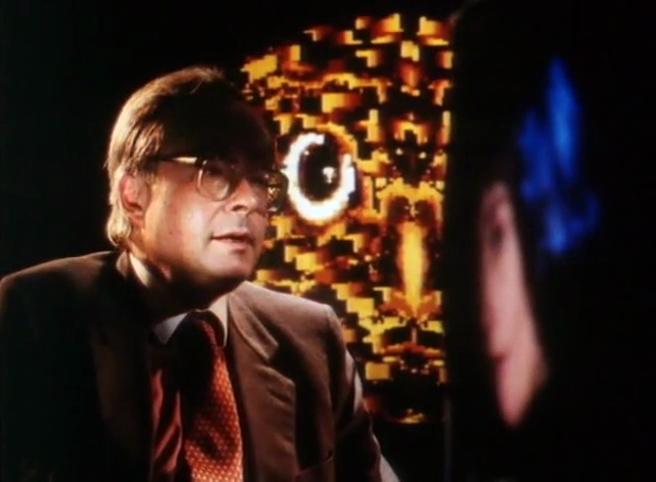
Figure 3. The Owl’s Legacy, episode 1: George Steiner speaks seemingly to a woman an on inset TV screen
Outwitting the Gorgon: Competing Allegories of the Cave
Marker’s symposial montage takes on increasing complexity as the program develops, with citations, interviews, and voiceover passages rebounding off of each other in ever more sophisticated ways. An especially virtuosic case in point occurs toward the end of the ninth episode, “Cosmogony, or The Ways of the World,” where Marker reworks Plato’s allegory of the cave, doing so in the context of an ongoing meditation on the creative capabilities of human beings—a meditation that eventually expands to address the role of technical images produced and circulated by audiovisual media.
Plato’s tale comes up in the episode when two narrators, one male, the other female, speak the parts of Socrates and Glaucon respectively. What appears onscreen corresponds to what Socrates asks his interlocutor to envision: a dark chamber where captive spectators believe the shadowy forms on the wall to be “real things” on which to base their knowledge. Film theorists have long treated Plato’s tale as describing a kind of metacinematic scenario, one that rather forebodingly predicts the technical apparatus of cinema and the theatrical film-viewing situation.[11] Yet in Marker’s clever twist on this passage from book VII of the Republic, the prisoners watch a television screen with upturned faces. As the mobile camera describes these spectators, we see that Beklhodja sits among them. The male narrator—now switching verbal roles from Plato’s Socrates to Marker’s surrogate—alludes to a 1940 article by the philosopher Simone Weil that likens Plato’s cave to a “movie house” and the illusory events it perpetrates. But Marker’s purpose is not to rehash what, since Weil, has become a familiar theoretical take on Plato’s cave allegory as presaging how the projected spectacle of cinema deceives its audience. Instead, Marker works to oppose that iconophobic reading by highlighting a possibility it ignores.
A key to following this essayistic move on Marker’s part lies in the episode’s previous scene, in which the historian Jean-Pierre Vernant deciphers another Greek myth, also set in a dark cave, that allegorically defines the creative utility of images. According to Vernant, the crafty way in which Perseus approaches and defeats Medusa, using a reflective shield not only to foil her lethal countenance but also to capture and redirect the power she exudes, turning it to his advantage, is rich with meaning: it stresses a human will to confront and to overturn the ever-present horror of death (here embodied by the deadly gaze of the Gorgon) through the cunning use of artificial images (reflections made by the shield) that usurp the petrifying force of that horror. Implicitly for Marker, this cave allegory, no less than Plato’s, resonates with cinema in its technological, creative, and exhibitory aspects, but Marker’s work frames this relation in a sense that is liberating as regards the fate of humanity. The expressive logic of the episode asks us to weigh Vernant’s reading of the Perseus myth over and against Weil’s reading of Plato’s cave. Marker stages this conflict through the use of film clips that visually interrupt both readings in the episode and forge a contrast between them. To be precise, he inserts scenes from Hiroshima mon amour (Resnais, 1959), showing us the two naked caressing bodies, male and female, that intertwine in its prologue. It is that image that fills our screen, displaces the gloomy reenactment of Plato’s allegory, and then coincides with our narrator’s rejoinder to Weil: “How could she accept that this ‘inferior’ art form should find within the cave the power to negate the cave, to disarm the Gorgon, to tie itself to the thread of human creation, and, finally, to create its own myths?”
Dispensing a lesson of his own, Marker materially cites Hiroshima as demonstrating a post-World War II modern cinema that rouses critical thought from within the “cave” and, more specifically, embroils its viewers in a confrontation with the horrific past, in particular the Allies’ dropping of the atomic bomb and its aftermath. Marker’s lesson also has to do in part with his own procedure. As an additional level of reflection, his own act of citation, his nimble capture and reuse of Resnais’ film, itself figures in the episode as a Persean shield of sorts, a reflective device turned against the numbing proto-cinematic scenario that Socrates envisions. In other words, in this intensely self-conscious moment, Marker confers onto his own citational technique the ability “to negate the cave, to disarm the Gorgon.” In doing so, he separates his work from the Platonist fear of images that some theorizations of cinematic images have perhaps too pessimistically rehearsed.
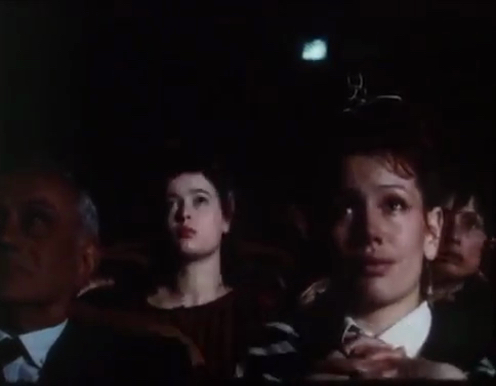
Figure 4. The Owl’s Legacy, episode 9: reenactment of Plato’s cave, with Belkhodja (right) among the spectators
Still, the question remains: what exactly does the fatal Gorgon embody for Marker in this comparison of cave myths and insinuated commentary on his own essayistic operations? As Marker was no doubt well aware when he made The Owl’s Legacy, the Medusa legend has inspired artists, writers, and thinkers in fields across the humanities from the early modern period to the present. Karl Marx took the Medusa head as an incarnation of sinister monstrosity that lurks behind the “veil” of structures and processes of capital that coerce human beings into accepting the state of things as a fait accompli.[12] For Roland Barthes, who is a kindred thinker for Marker in many ways, the Medusa tale metaphorically represents the debilitating might of what he calls the “Doxa,” which fosters ready acceptance of current opinion and reigning views as if they are natural, the way things just are.[13] Neither Marker nor one of his implied collaborators says precisely what the Medusa personifies in his interpretation, but it is clear enough that the episode updates and re-construes the Greek tale along the axis of mediated spectacle. I take it that for Marker, the Gorgon in and of the twentieth century comprises a stultifying flow of entertainment and information that both rules out experiment and exerts a power to induce mindless acquiescence in its audience.[14] The effect of Marker’s work is to show that through material citation and interpersonal essayistic thought, film and television can (and must) be reshaped into tools of critique, into dispositifs that work reflectively against this oppressive, mass-mediated scheme.
Given our emphasis on the symposial spirit of Marker’s style in The Owl’s Legacy, we should not fail to notice that in his juxtaposition of cave myths, the ideas surface and build through a layered interplay of dialogical exchanges—some of which are actual and some of which are synthetically constructed through montage—between paired-off men and women. We have the alternating male and female voiceover commentators; Vernant in a synthetic debate with Weil; and the conversing and caressing couple in Hiroshima mon amour, a work made by Marker’s onetime collaborator, Alain Resnais, from a script by Marguerite Duras. Again, the threading of the episode is such that Marker’s voice and hand become readable and acquire meaning only through the stratifications of a polyphonic discourse, a montaged series of male-female interactions that dispose of a uniform authorial enunciator, even as the audiovisual process on display is inimitably of Marker’s doing.
A number of the most accomplished audiovisual essayists—Jean-Luc Godard, Agnès Varda, Resnais, and Alexander Kluge to mention just a few—have made use of male-female pairings as a vital strategy of enacting dialogue and of acknowledging the potential share of the viewer therein. In The Owl’s Legacy, Marker’s insistent inclusion of female voices, gazes, and perspectives is framed as a gesture of revision with respect to the Greek practice of the symposium that Marker’s style reworks. This is made most starkly apparent in the eleventh episode, “Misogyny, or The Snares of Desire,” where the discussants comment on the utter lack of gender equality in Athenian society. We are told that both democratic participation and philosophical debate were for males alone, save for the presence of flautists and hetairai (geisha-like prostitutes) at symposia. By contrast, Marker’s montage persistently cedes time and critical weight to female interlocutors in the episode: the historian, anthropologist, and political scientist Giulia Sissa; the singer Angélique Ionatos; the historian and archaeologist Christiane Bron; and the classicist Manuela Smith. Marker also revisits the more peripheral women attendees on whom his camera fixated in the initial episode. Once again, he doesn’t conceal his interest in their beauty, but now he characterizes his interest as benign and non-exploitative by splicing in, for the sake of contrast, a clip of the Greek actor and filmmaker Alexis Minotis arguing that women are naturally unassertive and in need of male direction. In addition to rebuffing this chauvinism, Marker’s balanced integration of male and female speakers playfully explores the notion, recounted in Aristophanes, that primordial humans had four arms, four legs, and both male and female anatomical traits. This myth holds that these hermaphroditic beings eventually divided into two sexes and that ever since, men and women have harbored impulses to re-converge with each other. Marker’s montage refigures this mythological definition of Eros into a principle of friendly intellectual exchange between equally authorized participants.
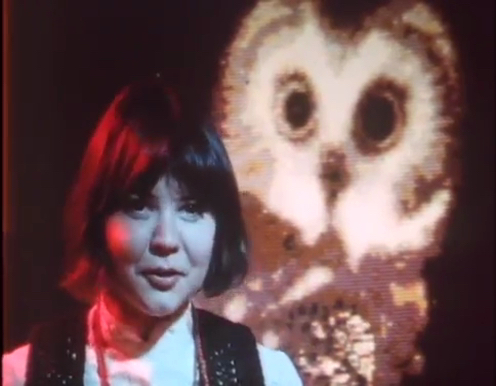
Figure 9.
Figures 6-9: The Owl’s Legacy, episode 11: prominent female interviewees: Angélique Ionatos (top), Giulia Sissa (second from top), Christiane Bron (third from top), and Manuela Smith (bottom)
In Praise of “Weak” Thought
In the series’ final episode, “Philosophy, or The Triumph of the Owl,” the symposia and interviews reach an end through considerations of the values and aims of philosophy as bequeathed from ancient Greece. Here, too, the remarks edited together by Marker apply to his essayistic method as much as they do to the nominal topic. Freedom, the capacity to think freely without having to observe either a pre-existing authoritative system or the wiles of a prophet, arises as an agreed upon conception of philosophy’s pleasures, rewards, and merits.[15] One interviewee in the episode, the French philosopher/essayist Michel Serres, adds to the discussion by arguing that the ideas generated by such free thought ought to have no truck with power. Rejecting Plato’s vision of a just society ruled by philosophers, he asserts that philosophical pursuit derives its significance from its very distance from state authority, whose inevitable corruption and violence (physical or ideological) it becomes the business of philosophy to contest. As Serres puts it:
An idea is only good when it has no power. I like ideas that aren’t too strong, that don’t have too much weight. Once an idea becomes dominant—as good as it may be—it becomes abominable. Ideology is always “ideocracy,” the deadliest of tyrannies. My fear of making political theories ensues from my fear of power. Power of people, of money, any power is better than that of ideas. Every time ideas have taken power, they have killed people. The real way to assess the value of a science or a theory is to count the people not killed. Show me the number of your dead, and I’ll tell you what you’re worth.
One senses in this statement an ethico-political justification not just for philosophy but also for Marker’s multi-voiced means of reflection, which likewise springs from, dramatizes, and works to cultivate free thinking.
Equally pertinent on this score is a toast given by one of the Tbilisi symposia guests in honor of Mikhail Bakhtin and in praise of dialogue proper, which, the guest implies, is in shorter supply than its banal use as a political catchword indicates. “We talk about the necessity of it, for the changing of centralism and monopoly toward pluralism, toward a plurality of perspectives. Let’s drink to a life a little more … dialogical.” This serves a benedictory toast to the symposial style of The Owl’s Legacy, and thus to Marker’s polyphonic essayism, driven as it is by a dialogical ethos of shared reflection.
And so, where does this finally leave us as concerns Marker’s subjectivity as essayist? As I have noted above, the traces of his presence aren’t fully cloaked in this symposial style. One still finds it appropriate to name a distinctive author at work—not a genius creator, but a virtuosic montagist and displaced, indirect enunciator. The work half-hides his authorship but doesn’t dispense with it in favor of the total anonymity that informs some of his earlier, unsigned works during the height of his political militancy. This curious ambivalence about the individuality of the author is by no means unique to Marker in the larger category of the audiovisual essay. Parallel tendencies can be found in the self-inscriptive and self-abdicating gestures of Orson Welles (his paradoxically self-triumphant ode to the anonymous glory of Chartres Cathedral in F for Fake [1973]), Godard (his auteurial suicide at the end of JLG/JLG [1994] and his densely citational “I was that man” claim for posterity at the end of Histoire(s) du cinema [1988-98]), and Varda (her partial diffusion and displacement of herself through an emphasis on landscape in The Beaches of Agnès [2008]).
In the case of Marker, the essayistic force of this ambivalence is to inscribe a shifting persona defined chiefly in terms of method, and only secondarily (and rather sparingly) in terms of biography. The “guarded intimacy,” as Jonathan Rosenbaum puts it,[16] that emerges through Marker’s game of absence and covert presence in his oeuvre is such that “Marker” becomes knowable and communicable to us through the stylistic gestures that enact his investigative work and that hold out its concerns invitingly to others. In this essayistic relationship with the viewer, “Marker” names less a man than a dynamic screen pedagogy whose remit is not only to improve and challenge our mental agility, but also to bring us into the collaborative fold of the reflection. In watching The Owl’s Legacy we feel ourselves beckoned not directly but indirectly, through stand-in viewers and discussants, as well as through the gazes of the artificial owls that stare back at the camera from the behind the interviewees. “Marker” in this way becomes potentially the mask and vector of our own engagement, not because his thoughts overpower us, but because we accept the work’s conditions of interrelatedness as radically informing our own divided, multiple, and inconsistent selves, our own negotiations between individual and collective life.[17]
To discover something of our own relational complexities in Marker’s critical process is not, however, to resort to narcissistic identification. On the contrary, our mediated share in the matter demands our humble receptivity to otherness and to alternative, possibly discordant voices. Beyond its historiographical and epistemological aims, Marker’s essayistic enterprise teaches nothing so urgently as the need for humility in a world and media environment that increasingly seems averse to patient, exploratory thought, undertaken in lively communality. The Owl’s Legacy in effect aspires toward an essayistic variation on what the Jena Romantics described as “symphilosophy,” a genial commingling of minds thinking both with and against one another to the point where ideas spring from a collective spirit, individuality having lost its isolable status.[18] In our encounter with Marker’s work, the forfeit of a unitary conception of self is ours to make, too.
Rick Warner is Assistant Professor of Film and Kenan Fellow in the Department of English and Comparative Literature at the University of North Carolina-Chapel Hill. He is co-editor, with Colin MacCabe and Kathleen Murray, of True to the Spirit: Film Adaptation and the Question Of Fidelity (Oxford UP, 2011) and, with Gregory Flaxman and Elena Oxman, of The Film-Philosophy Reader, a forthcoming three-volume anthology. He is guest editor of a special issue of Critical Quarterly (October 2009) dedicated to the late films and videos of Jean-Luc Godard. He is currently completing a book manuscript on cinematic uses of the essay form.
Notes
- For a theorization of the essay film that insists on direct address and “I-You” rhetorical interpellation, see Laura Rascaroli, The Personal Camera: Subjective Cinema and the Essay Film (London: Wallflower, 2009).
- Phillip Lopate, “In Search of the Centaur: The Essay-Film,” in Totally, Tenderly, Tragically: Essays and Criticism from a Lifelong Love Affair with the Movies (New York: Doubleday, 1998), 280-311.
- Nicole Brenez, “Forms 1960-2004: ‘For it is the Critical Faculty that Invents Fresh Forms’ (Oscar Wilde),” The French Cinema Book, ed. Michael Temple and Michael Witt (London: British Film Institute, 2004), 232-33.
- Stella Bruzzi, New Documentary, 2nd ed. (London: Routledge, 2006), 64-72.
- Nora M. Alter, Chris Marker (Urbana: University of Illinois Press, 2006); Timothy Corrigan, The Essay Film: From Montaigne, After Marker (New York: Oxford University Press, 2011).
- Catherine Lupton, “Speaking Parts: Heteroglossic Voice-over in the Essay-Film,” in Der Essayfilm: Ästhetik und Aktualität, ed. Sven Kramer and Thomas Tode (Konstanz: UVK Verlagsgesellschaft, 2011), 159-74.
- Kodwo Eshun, “The Owl’s Legacy: In Memory of Chris Marker,” Sight and Sound (October 2012): http://www.bfi.org.uk/news-opinion/sight-sound-magazine/features/owls-legacy-memory-chris-marker.
- Lupton, “Speaking Parts,” 167.
- In his book that accompanied his 2007 photography exhibit, Marker, through a citation of a poem by Valery Larbaud, writes regarding his tendency to single out beautiful women in the crowds of events he documents: “‘For, I don’t know why, it seems to me that with them I could conquer a world.’ […] Perhaps, if could catch up with that absolute beauty in Cape Verde, the violinist in Stockholm lost in her thoughts, the grandmother in Corsica kissing the sacred stone, the exhausted Chinese laborer, the Japanese extra sleeping between two takes, the two Russian girls listening to poetry, the young woman dozing in the train […]. Perhaps I could conquer a world. Or rather, they would conquer a world for me.” Chris Marker, Staring Back (Cambridge, MIT, 2007), 80. In the same book, Belkhodja’s close-up receives a full page, as the recto to the verso of Fidel Castro delivering a speech from the late 1960s (both images, like all of the photographs in the exhibit, are black and white and digitally altered so as to produce a hazy, more painterly texture). Belkhodja looks to the left, as if observing Castro’s speech. She thus figures as a witness of tumultuous history, a kind of Benjaminian angel.
- Catherine Lupton, Chris Marker: Memories of the Future (London: Reaktion, 2005), 170-76.
- In film theory, perhaps the most famous description of Plato’s cave as a proto-cinematic situation is given by Jean-Louis Baudry, “Ideological Effects of the Basic Cinematographic Apparatus” [1970], trans. Alan Williams, in Critical Visions in Film Theory: Classic and Contemporary Readings, ed. Timothy Corrigan and Patricia White with Meta Mazaj (Boston: Bedford/St. Martin’s, 2011), 41.
- Karl Marx, “Preface to the First Edition” [1867], Capital: A Critique of Political Economy, vol. 1, trans. Ben Fowkes (Middlesex: Penguin, 1982), 91.
- Roland Barthes, Roland Barthes, trans. Richard Howard (Berkeley: University of California Press, 1994), 122-23.
- Implicit here, of course, is the reality that “the Gorgon,” to continue Marker’s metaphor, has expanded its terrain well beyond the movie theater into the domestic sphere, spanning public and private space. The Owl’s Legacy gives form to a longing for an alternative kind of television, an ambition that finds expression in Marker’s other televisual projects as well as in some of his multimedia installations, in particular Zapping Zone (Proposals for an Imaginary Television) (1990).
- In the symposial flow of discussion, philosophical “freedom” is also couched in opposition to the competitive individualism encouraged in capitalist society.
- Jonathan Rosenbaum, “Personal Effects: The Guarded Intimacy of Sans Soleil,” The Criterion Collection (2007): https://www.criterion.com/current/posts/484-personal-effects-the-guarded-intimacy-of-sans-soleil.
- In the words of Nicole Brenez, “Although Marker’s cinema explores the movement of the image through the twists and turns of thinking, the folds and recesses of memory, it never becomes mere subjectivism. However infinitely melancholic and utopian it may appear, history for Marker remains collective, and the intellectual internationalism that he invented provides us with a record of the successive states of universalism in the 20th century.” Brenez, “Forms 1960-2004,” 232.
- Friedrich Schlegel, Friedrich Schlegel’s Lucinde and the Fragments, trans. Peter Firchow (Minneapolis: University of Minnesota Press, 1971), Athenaeum Fragments nos. 112, 125, 264. Precisely because of this stress on collective authorship, early German Romanticism is not to be confused with contemporaneous French and English Romantic traditions of literary, artistic, and intellectual practice.

